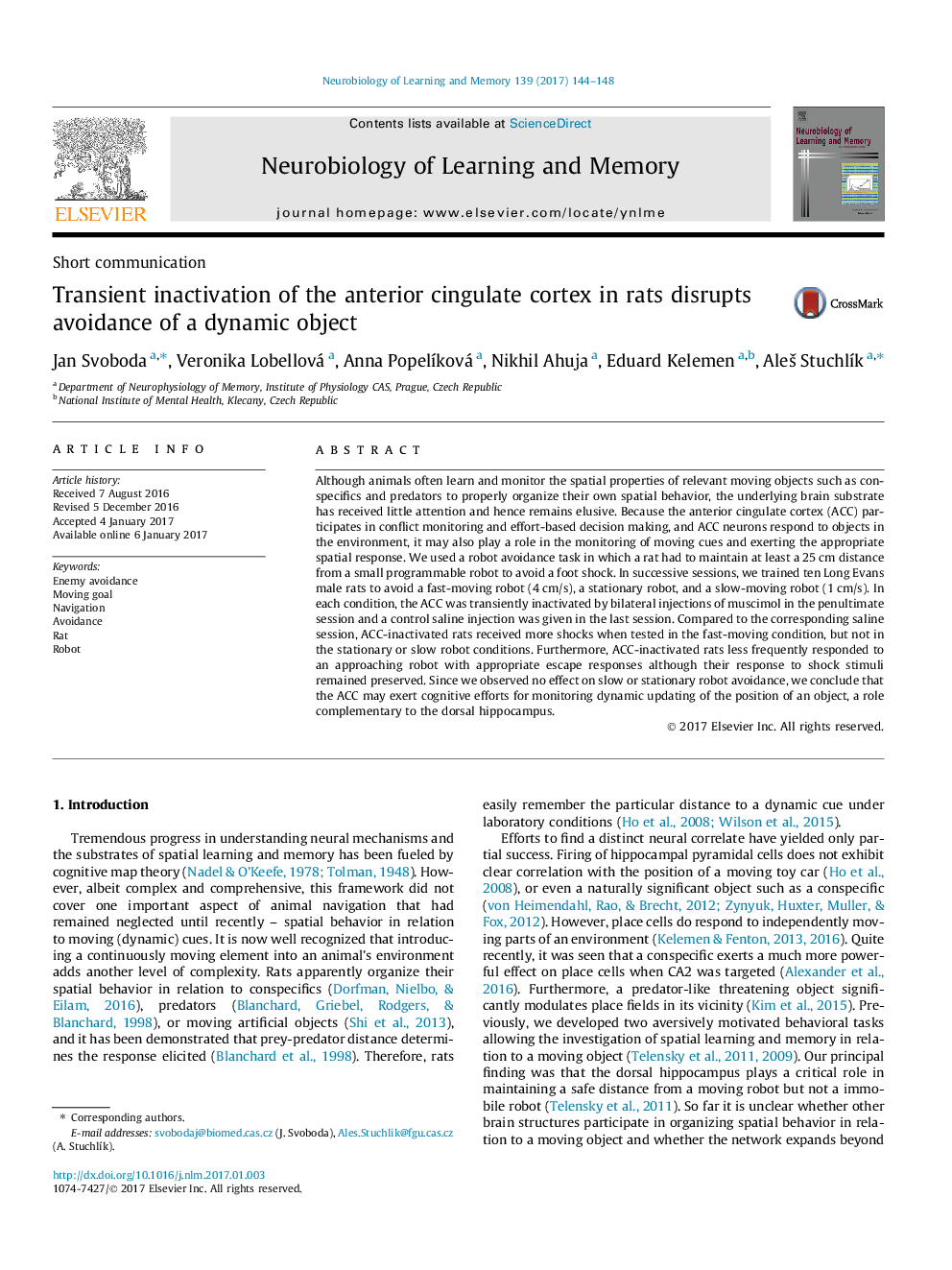| Article ID | Journal | Published Year | Pages | File Type |
|---|---|---|---|---|
| 5043309 | Neurobiology of Learning and Memory | 2017 | 5 Pages |
â¢Robot avoidance task was used to assess involvement of anterior cingulate cortex (ACC) in avoidance of a dynamic object.â¢Muscimol inactivations of ACC were performed while rat was avoiding fast-moving, slow, or stationary robot.â¢ACC inactivation disrupted avoidance of fast-moving robot, but not slow or stationary robot.â¢ACC might be a part of a network devoted to dynamic updating of the position of an object.
Although animals often learn and monitor the spatial properties of relevant moving objects such as conspecifics and predators to properly organize their own spatial behavior, the underlying brain substrate has received little attention and hence remains elusive. Because the anterior cingulate cortex (ACC) participates in conflict monitoring and effort-based decision making, and ACC neurons respond to objects in the environment, it may also play a role in the monitoring of moving cues and exerting the appropriate spatial response. We used a robot avoidance task in which a rat had to maintain at least a 25Â cm distance from a small programmable robot to avoid a foot shock. In successive sessions, we trained ten Long Evans male rats to avoid a fast-moving robot (4Â cm/s), a stationary robot, and a slow-moving robot (1Â cm/s). In each condition, the ACC was transiently inactivated by bilateral injections of muscimol in the penultimate session and a control saline injection was given in the last session. Compared to the corresponding saline session, ACC-inactivated rats received more shocks when tested in the fast-moving condition, but not in the stationary or slow robot conditions. Furthermore, ACC-inactivated rats less frequently responded to an approaching robot with appropriate escape responses although their response to shock stimuli remained preserved. Since we observed no effect on slow or stationary robot avoidance, we conclude that the ACC may exert cognitive efforts for monitoring dynamic updating of the position of an object, a role complementary to the dorsal hippocampus.
